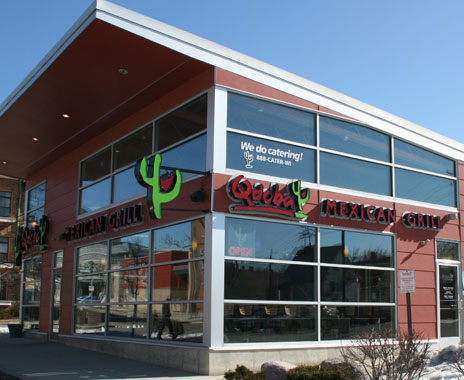Soaring labor and food costs clouded Jack in the Box Inc.’s third-quarter earnings Wednesday. The company’s stock trended upward, however, thanks to improved comparable same-store sales at its two brands, Jack in the Box and Qdoba.
Jack in the Box missed on both earnings and revenues, but there was enough optimism to send shares up more than 2 percent in afterhours trading.
Adjusted earnings per share of 99 cents was less than Zacks Consensus Estimate’s $1.05, and revenue of $357.8 million missed Zacks’ $360 million prediction by 0.6 percent.
Comparable-store sales at Jack in the Box company stores fell 1.6 percent year-over-year, but was an improvement from the 2.4 percent decline in the second quarter. Transactions also dropped 4.4 percent, although that was partially offset by average check growth of 2.8 percent. Franchised stores saw a 0.1 percent increase after declining 0.4 percent in the first quarter.
At company-owned Qdoba restaurants, comps decreased 1.1 percent and transactions dropped 2.8 percent compared to the 5.9 percent decline in comps from the first quarter. Franchised restaurants saw a 2.3 percent increase in the quarter, besting the 0.3 percent decline in the prior period.
“While same-store sales for both brands improved sequentially, our third quarter performance was below our expectations. Jack in the Box same-store sales and transactions improved as we focused more of our advertising on value messages, but company restaurant margins were negatively impacted by higher labor and repairs and maintenance costs, and the return of commodity inflation,” said Lenny Comma, chairman and chief executive officer, in a statement. “System same-store sales at Qdoba restaurants turned positive in the quarter, as guests responded favorably to menu innovation, including the launch of Fire-Roasted Shrimp. Company restaurant margins at Qdoba improved sequentially to over 16 percent in the quarter as we were able to manage labor costs more effectively.”
Comma also noted that Jack in the Box sold 58 restaurants in the third quarter as part of its refranchising initiative and has completed 118 deals year-to-date. At the end of the quarter Jack in the Box signed non-binding letters of intent with franchisees to sell 63 additional units.
Notably, Jack in the Box said its evaluation of potential alternatives for Qdoba is forging ahead. Morgan Stanley & Co. LLC is assisting the company’s board of directors. This doesn’t mean a sale is necessarily imminent, however. “There can be no assurance that the evaluation process will result in any transaction. The company has not set a timetable for completion of the evaluation process, and it does not intend to comment further unless a specific transaction is approved by the board, the evaluation process is concluded, or it is otherwise determined that further disclosure is appropriate or required by law,” the company said in a release.
At the company’s investor meeting last year, Comma said one of the factors that would lead the company to reconsider its Qdoba strategy was valuation.
This situation was discussed in the previous quarter as well, as Comma said, “It has become more apparent since then that the overall valuation of the company is being impacted by having two different business models.”
Uncertainly prompted Qdoba franchisees to form the Qdoba Franchisee Association. The independent organization represents the franchisees that own and operated 340 of the system’s 700—plus units in the U.S. and Canada.
“With the uncertainty surrounding the future ownership of the Qdoba brand, we felt this was the appropriate time to unite the franchisee community with an independent voice,” QFA chairman Ron Stokes said in a statement at the time.
Consolidated restaurant operating margin decreased by 380 basis points to 18.1 percent of sales in the third quarter, compared with 21.9 percent of sales in the year-ago quarter. Restaurant operating margin for Jack in the Box company restaurants decreased 320 basis points to 19.3 percent of sales.
“The decrease was due primarily to higher labor costs including wage inflation, as well as higher repairs and maintenance costs, an increase in food and packaging costs as a percentage of sales, and sales deleverage, which were partially offset by the benefit of refranchising activities in 2017,” the company said.
Jack in the Box expects same-store sales of flat to negative 2 percent at Jack in the Box system restaurants versus a 2 percent increase in the year-ago quarter. Same-store sales of flat to negative 2 percent are expect at Qdoba company restaurants versus a 1.2 percent increase last year.




